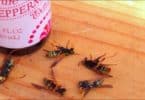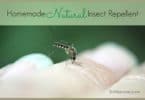Thumper was cute in the movie Bambi. Even the clever Bugs Bunny wasn’t too bad. Wild rabbits, however, are far from cute when they are destroying your gardens and landscaping. It can be devastating to work hard establishing a beautiful garden only to find that the neighborhood rabbits are using it as their personal salad bar.
Vegetable and flower gardens aren’t the only things vulnerable to rabbit attacks. Rabbits can also inflict fatal damage to young trees, especially in winter months. If the rabbits eat the bark off all the way around the trunk, they effectively girdle the tree, killing it. The girdling disrupts the flow of food through the tree’s vascular system. Though rabbits do have their favorite species, (serviceberries, apples and crabapples rank high on their list) any tree is vulnerable when food is scarce and the rabbit population is high.
So, how does one deal with these incredibly persistent pests? Many options are available with varying levels of effectiveness.
Commercial rabbit repellent is available at garden shops and home improvement stores. It comes in a spray bottle and it tends to be somewhat expensive. The ingredients may include garlic, blood meal, eggs, cayenne pepper and other foul-smelling things. It definitely seems like it would deter rabbits when you spray it on and around your plants – the smell is quite noticeable to the human nose at first.
The odor, however, fades very quickly. Although many commercial repellents make the claim that they are effective up to two months that is rarely the case. These repellents need to be re-applied after a heavy rain. Also, if food is scarce, even this foul smell won’t keep Thumper away. The bottom line is rabbit-repellent sprays have limited effectiveness and require frequent reapplication to protect plants.
You can also make your own homemade rabbit repellent for a more cost-effective option. Place 2-3 tablespoons each of cayenne pepper and garlic powder into a cheesecloth or coffee filter. Use a twist tie to close the top of your makeshift teabag. Place the teabag into a jug or pitcher and poor warm water over it. Allow the mixture to steep overnight. Then, slowly pour the liquid into a spray bottle. Add a little bit of dishwashing soap to help the mixture adhere to the plants’ leaves. Your homemade rabbit repellent is now ready to use. Like the commercial version, this spray will have to be reapplied after heavy rains.
Another method of thwarting the rabbits is called the exclusion method. This is probably the most effective method, but it also requires the most work. You must put up a chicken wire or hardware cloth fence around your vegetable or flower gardens. Since rabbits can and will dig, the base of the fence needs to be buried 8 inches below the soil to deter them.
Trees or shrubs can be protected with their own chicken wire or hardware cloth enclosures. If you live in an area where it snows, it’s important that the fence is tall enough that the rabbits won’t be able to easily hop over it when there’s snow on the ground. Most of the time a height of 24” to 36” is sufficient. Generally it’s enough to surround the tree or shrub with the enclosure without burying the bottom edge. The rabbits are most likely to go for the trees and shrubs in colder climates when the ground is frozen and they won’t be able to dig.
If you want to get up close and personal with this little garden pest, the live trap is another option. The live trap, however, will make very little impact on a rabbit population. A mature doe can have up to five litters in a single season!
Rabbits are notorious garden pests and there is very little that a gardener can do once plants have been damaged by rabbits. That’s why prevention is so important. With a little determination, an avid gardener can repel the rabbits and still have beautiful plants.






